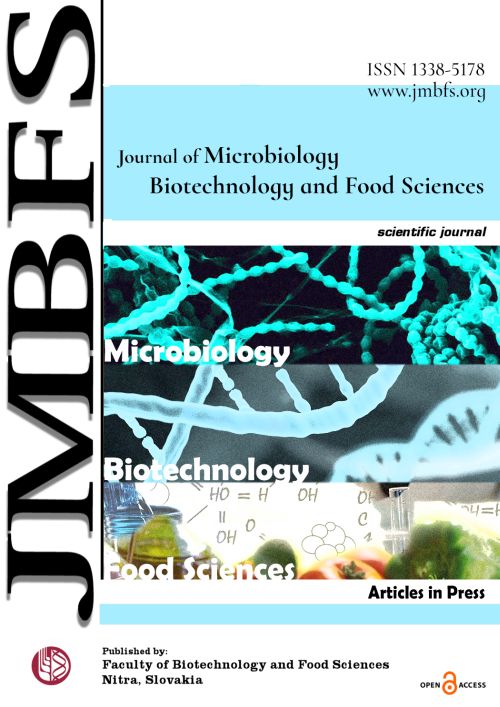EVALUATION OF ANTIOXIDANT POTENTIAL OF ASIMINA TRILOBA (L.) DUNAL FLOWERS AND FRUITS
DOI:
https://doi.org/10.55251/jmbfs.11605Keywords:
Pawpaw, genotypes, antioxidant activity, phenolic compoundsAbstract
This study aimed to test the antioxidant parameters of the flower and fruit ethanol extracts of 15 genotypes of Asimina triloba (L.) Dunal. (AzTr-01 – AzTr-15) collected in the M.M. Gryshko National Botanical Garden (Kyiv, Ukraine). Antioxidant activity of the extracts of the investigated genotypes was measured with free radical scavenging activity (FRSA) by the DPPH method and molybdenum reducing power (MRP) expressed as mg TE (Trolox equivalent) per g of DW (dry weight). The total polyphenol content (TPC) was expressed as mg GAE (gallic acid equivalent) per g of DW, total flavonoid content (TFC) was expressed as mg QE (quercetin equivalent) per g of DW, and total phenolic acid content (TPAC) expressed as mg CAE (caffeic acid equivalent) per g of DW. It was determined that the flower and fruit extracts of A. triloba demonstrated 5.45-77 and 2.33-7.21 mg TE/g of FRSA, respectively. Depending on a genotype, MRP of the flower and fruit extracts was 85.13-114.65 and 98.19-261.33 mg TE/g, respectively. TPC of the flower extracts ranged from 40.63 to 55.47 mg GAE/g and fruit extracts from 22.59 to 38.13 mg GAE/g. The flower extracts demonstrated 22.54-36.18 mg QE/g of TFC and 9.31-16.24 mg CAE/g of TPAC. The fruit extracts exhibited 15.07-30.55 mg QE/g and 3.11-6.58 mg CAE/g. These results indicated that various plant parts of A. triloba genotypes are appropriate for usage in food and pharmaceutical products as a raw material with a high content of biologically active compounds.
Downloads
Downloads
Published
How to Cite
Issue
Section
License
Copyright (c) 2023 Olga Grygorieva, Olena Vergun, Mykhailo Zhurba, Antonina Ilyinska, Eva Ivanišová, Vladimíra Horčinová Sedláčková, Ján Brindza

This work is licensed under a Creative Commons Attribution 4.0 International License.
All papers published in the Journal of Microbiology, Biotechnology and Food Sciences are published under a CC-BY licence (CC-BY 4.0). Published materials can be shared (copy and redistribute the material in any medium or format) and adapted (remix, transform, and build upon the material for any purpose, even commercially) with specifying the author(s).





